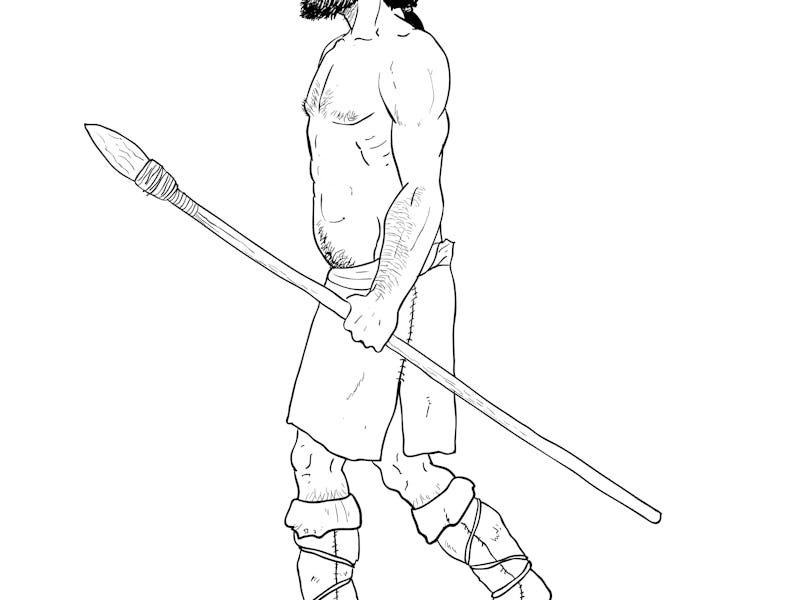Inverse Daily: Neanderthals didn't leave big carbon footprints
Plus: The Hyperloop is destined for a place in American cultural history.

The past meets the present this morning. Let's connect the dots across the epochs. I'm Nick Lucchesi, your humble guide and editor-in-chief at Inverse.
I asked science writer Tara Yarlagadda if she could draw a line between two new stories she wrote this week. Here's what she said:
“The first story looks back to our past — the ancient Neanderthals — to understand ourselves. The second story shows how humans can impact our future through what we eat.”
Read on for dives into both of these mind-expanding science stories, plus more from our Science and Innovation writers.
Let's dive in: Here are the day's biggest stories from Inverse, the coolest place to get smarter.
In the loop — Rare is the thing that makes it into a museum before it makes its impact on society. So it is for the Hyperloop, the tube-transportation system that's received a lot of investment, but has yet to go beyond a handful of passengers.
The vacuum-sealed pod transit system, first proposed in a 2013 white paper by Elon Musk, will feature in an upcoming Arts and Industries Building exhibition themed around the future, Inverse's Mike Brown reveals in an exclusive interview. Visitors to the Smithsonian’s Futures exhibition, which opens in November 2021 and marks the institute’s 175th anniversary, will see Virgin Hyperloop’s Pegasus XP-2 pod up close for the first time.
What they're telling Inverse: “This ability to say we started a company a little over six years ago in a garage and built a new technology that people are really excited about … and then to have that be recognized in that way and have it be etched in history.” — Josh Giegel, co-founder of Virgin Hyperloop and CEO.
More like this:
- Virgin Hyperloop: incredible video shows how people will ride 700 mph tube
- The reason why Hyperloop hasn't hit 700 mph yet
- First passenger says “zippy” ride felt like science fiction
'Black Holes: The Edge of All We Know' follows a group working in the world’s highest-altitude observatories as it creates an Earth-sized telescope.
A telescope the size of Earth — Here's Inverse's Passant Rabie on a mind-boggling new space documentary: In 2019, a group of astronomers from all over the world captured the first image of a black hole, making the invisible visible for the first time. To do it, they had to build a telescope network with a staggering scale.
A new documentary, Black Hole: The Edge of All We Know, grants us unprecedented access to the process of setting up a virtual Earth-sized telescope to capture the first image of these cosmic beasts, bringing us one step closer to understanding the inner workings of the universe. (The documentary is out today, March 2, 2021, and is on Apple TV.)
What they're telling Inverse: “Ideally, to see a black hole, we would need a telescope the size of the entire Earth. We had to come up with a computational telescope that size.” —Katie Bouman, a computing science professor at Caltech who helped develop the code.
More like this:
- The world's first-ever black hole photo was an epic feat of data storage
- Astronomers reveal 3 things the historic black hole photo confirms about space
- Scientists conduct a gravity test at the edge of a black hole for the first time
Fine-tuned to the modern speech range.
Ancient eloquence — A study published Monday builds on previous research suggesting Neanderthals talked like us sophisticated Homo sapiens. Perhaps Geico commercials of yore, full of eloquent cavemen, were not so far off base after all.
What they're telling Inverse: “Neanderthals, though morphologically different, have an auditory capacity that's fine-tuned to the modern speech range.” — Michael Breyl, a post-doctoral researcher at the Ludwig Maximilian University of Munich.
More like this:
- Italy cave discovery shows Neanderthals had a surprisingly human feature
- Neanderthal study exposes a ‘fist bump’ kind of revelation
- Neanderthal DNA may influence your Covid-19 risk — here’s why
Carbon footprints for brunch— We all know by now the benefits of plant-based diets for Mother Earth. A new study puts that fact into stark relief, calling out the U.S. for decidedly unsustainable practices baked into its federal dietary guidelines.
The research published in Nutrition Journal shows the carbon footprint of the recommended U.S. dietary guidelines is higher than that of all six other countries studied, including both lower-income countries like India, and higher-income countries like Germany.
What they're telling Inverse: “Human food systems are a key contributor to climate change, so it’s irresponsible for governments to produce dietary guidance without considering their impact on the environment.” —Diego Rose, a co-author on the study and director of nutrition at Tulane University’s School of Public Health & Tropical Medicine.
More like this:
- With one food swap, your daily dietary carbon footprint shrinks 48 percent
- Lab-grown meat is actually bad for the climate too, warn scientists
- Changing your diet in 3 key ways could fundamentally affect climate change
That's all for this edition of Inverse Daily. You can follow me on Twitter at @nicklucchesi, where I share some of my favorite stories from Inverse, Input, and Mic every day.
Happy birthday to Daniel Craig, aka James Bond. His next and final Bond movie, No Time to Die, was supposed to come out months ago, but looks to see its release in October of this year. Watch the trailer and learn more about it in this article by our own Eric Francisco.